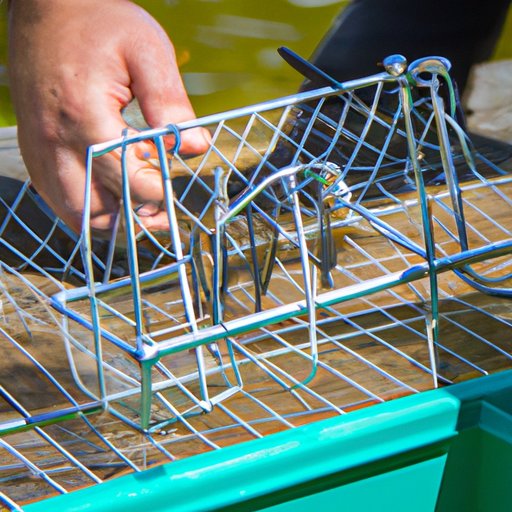Introduction
Trapping is an important activity for many people around the world, whether it’s for pest control, fur harvesting, or food procurement. It’s a skill that takes time and patience to master, but with the right knowledge and preparation, anyone can become a successful trapper. This article will provide an overview of the steps needed to start trapping, from researching the basics to removing the trapped animals.
Research the Basics of Trapping
Before you begin trapping, it’s important to research the basics of trapping. Start by familiarizing yourself with the local laws and regulations regarding trapping. Each state, province, and country may have different laws and regulations, so make sure you understand what is allowed in your area. Additionally, it’s important to learn about the various types of traps available and which ones are most effective for the type of animal you’re trying to trap.
You should also research the best techniques for different species. Different animals require different baits, lures, and setting techniques, so make sure you understand the proper methods for each type of animal. You can find helpful information online, in books, or by talking to experienced trappers in your area.
Choose a Location
Once you’ve done your research, it’s time to choose a location. Decide where you’ll be trapping and make sure it’s a suitable area for trapping. Consider factors such as the type of terrain, vegetation, and access to water. Make sure you have permission to trap in the area you choose and that you’re not violating any laws or regulations.
Gather Necessary Supplies
Now it’s time to gather all the necessary supplies. Invest in quality traps, bait, and other materials. Depending on the type of animal you’re trapping, you may need additional items such as gloves, a knife, string, or twine. Make sure you have enough supplies to last throughout the trapping season.
Set the Traps
Once you have all the necessary supplies, it’s time to set the traps. Decide where you’ll place the traps and use the proper baiting and setting techniques for each type of trap. Make sure you’re using the correct bait for the species and that the traps are located in areas where the animals are likely to travel.
Monitor the Traps
Once you’ve set the traps, you need to monitor them regularly. Check the traps every day and keep track of any animals that are caught. Make sure the traps are in good condition and that the bait hasn’t gone bad. If you notice any damage to the traps, replace or repair them as soon as possible.
Remove the Trapped Animals
Once you’ve caught an animal, it’s important to remove it carefully. Follow the local regulations regarding releasing or dispatching the animal. Be sure to take all necessary precautions to ensure the safety of both you and the animal.
Conclusion
Learning how to start trapping can be intimidating, but with the right knowledge and preparation, anyone can become a successful trapper. Research the basics of trapping, including local laws and regulations, types of traps available, and effective techniques for different species. Choose a suitable location for trapping and gather the necessary supplies. Set the traps using proper baiting and setting techniques and monitor them regularly. Finally, remove the trapped animals according to local regulations. With these steps, you’ll be well on your way to becoming a successful trapper.
(Note: Is this article not meeting your expectations? Do you have knowledge or insights to share? Unlock new opportunities and expand your reach by joining our authors team. Click Registration to join us and share your expertise with our readers.)
